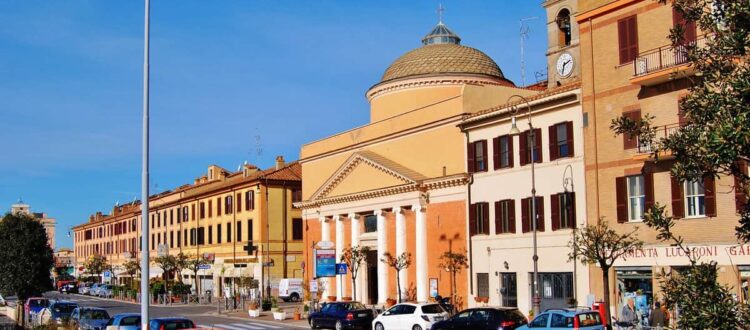Borgo Valadier, exploring the historic center of Fiumicino
Are you departing from or arriving at Fiumicino Airport? Here’s how to turn this brief stop into an experience you’ll remember for a long time, even when you’re back home.
Firstly, immerse yourself in the atmosphere of the town and discover the authentic flavors of our region, renowned for its seafood specialties. If you’re not sure where to start, here’s our guide on where to eat in Fiumicino, featuring the best restaurants to enjoy traditional dishes.
If you’re staying at Rome Airport Inn, we can also book a table for you for lunch or dinner.
Once your palate is satisfied, if you still have some time available (and don’t want to venture too far), we can suggest a short itinerary through the streets of Fiumicino, exploring the ancient historic center, the original nucleus of our beautiful seaside town: Borgo Valadier.
Huts around a tower: the settlement before Borgo Valadier
Our journey through the history of Fiumicino begins along Via della Scafa, in front of an ancient tower: Torre Nicolina, now located within private property.
Its name derives from Pope Nicholas V, who had it built in 1450 with the intention of guarding the coastline. From up there, it was possible to spot approaching pirate ships and sound the alarm, thwarting any attempted landings.
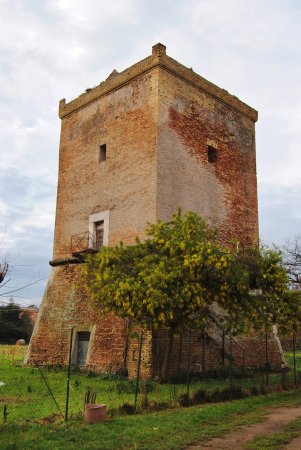
But if Fiumicino originated in the 19th century, why are we talking about this ancient building?
The fact is that, before the construction of Borgo Valadier, the population of Fiumicino lived right here, within meager huts built around the now dilapidated watchtower. It was a small spontaneous settlement, constructed by poor fishermen and a few farmers working in the area who decided to settle here, on Isola Sacra.
In total, there were about 600 people permanently settled in the area.
Houses along the canal. Giuseppe Valadier’s project
Continuing on our journey, we reach the beginning of the Fiumicino canal, along which stand the buildings that constitute the historic core of our seaside village. These well-preserved structures still bear the appearance given to them by Giuseppe Valadier, the renowned architect who, in 1823, was commissioned to design the face of the city that would emerge around the revived Trajan’s Canal, recovered in the 19th century for commercial activities. The artificial canal in Fiumicino, which now serves as a harbor for ships and fishing boats, is linked to the creation of the ancient port of Trajan: its purpose was to divert the river’s floods towards the sea, preventing flooding.
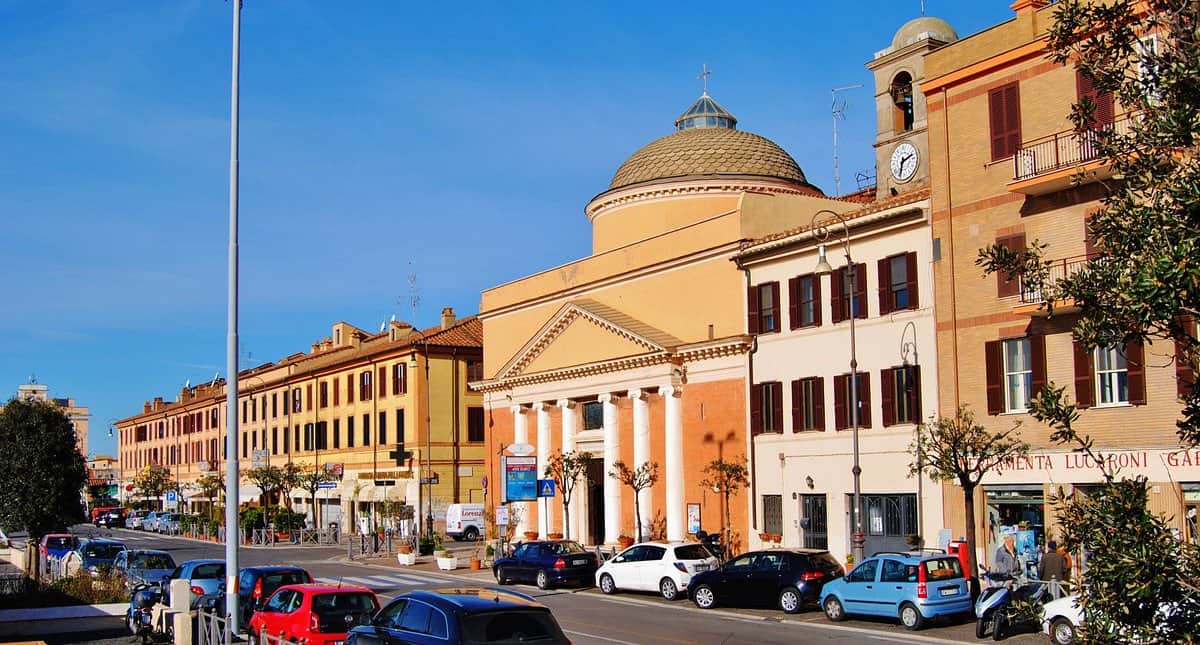
Cardinal Belisario Cristaldi, the chamber treasurer of the Papal States, entrusted Valadier with the important task. The intention was to build a civic center on the right bank of the canal, opposite to where the Nicolina Tower is located, creating a long series of “civil dwelling houses” between two ancient towers: the Tower Alessandrina (1662) and the Tower Clementina (1774), both now disappeared.
In Valadier’s original plan, there are some elements that do not correspond to reality. Behind the houses, he envisioned creating a beautiful tree-lined avenue with extensive Italian gardens. However, when theory turned into practice, the project underwent modifications. The residences, in fact, were built farther back than planned, leaving enough space to open a wide avenue overlooking the canal, which later became the main street of Fiumicino.
The historic train and the vanished Fiumicino station
Arriving on the promenade of Fiumicino, we cannot help but notice something unusual: an ancient steam locomotive placed next to the sidewalk. Even railway tracks are visible under the wheels! This small and unusual attraction is not here by chance. Once upon a time, the small seaside village of Fiumicino had its own train station, the terminus of the railway to and from Rome.
This connection was officially opened on May 6, 1878, when the branch line from Pontegaleria led here to the coast was inaugurated. The tracks on which this train is positioned are original, belonging to the old connection between the former railway station, long since disused, and the canal port, necessary for easily moving goods, including the day’s catch, from the ships docking at the quay.
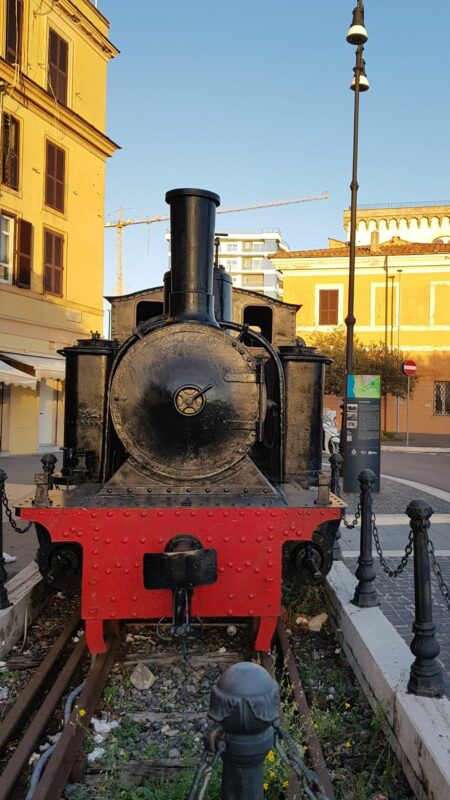
The exhibited train comes from the collection of an enthusiastic collector who wanted to donate it to the city of Fiumicino. It is a steam locomotive 45, built in Naples in 1880 under license from SLM of Winterthur, and baggage car D304, both narrow-gauge, belonging to the Ferrovie della Sardegna. Today, this “mobile” monument serves as an infopoint.
A church for Borgo Valadier: Santa Maria Porto della Salute
Walking along the street, among restaurants and shops, we arrive at the height of the main church of Fiumicino’s village: the church of Santa Maria Porto della Salute, erected in 1823 according to Valadier’s design with the aim of providing the community a place to gather in prayer.
It is located at the center of the village, interrupting the long row of buildings.
We cross the entrance portico with six columns and enter. Immediately, our gaze rises to admire the splendid dome on which is inscribed a Latin phrase: “Tu es Maria Virgo portus salutis et stella maris,” meaning “You are Mary, port of Salvation and Star of the Sea.”
The idea of the Virgin Mary as a safe harbor is also evoked by the large fresco in the apse depicting the Madonna protecting sailors about to reach the mouth of a river, shielding them from the waves. Observing the painting closely, one realizes that the depicted port is Fiumicino’s harbor, with the Clementina Tower standing guard over the coastal landing.
Clementina Tower, the bastion erased by war
Continuing to walk, we search for traces of a “vanished place”: the ancient Clementina Tower, an important landmark for the residents of Fiumicino. Today, in its place, we find another building that recalls its shape, namely the Tower of the Pilots.
When Borgo Valadier was established, the Clementina Tower stood in all its grandeur at the end of the promenade, almost marking the end of the inhabited center overlooking the sea.
Unfortunately, the Second World War erased this splendid defensive bastion: on April 30, 1944, precisely at 6:00 PM, the Germans, who had occupied the area, blew up the ancient monument. In retreat, the Nazis did not want to leave any strategic positions to the advancing Allied forces.
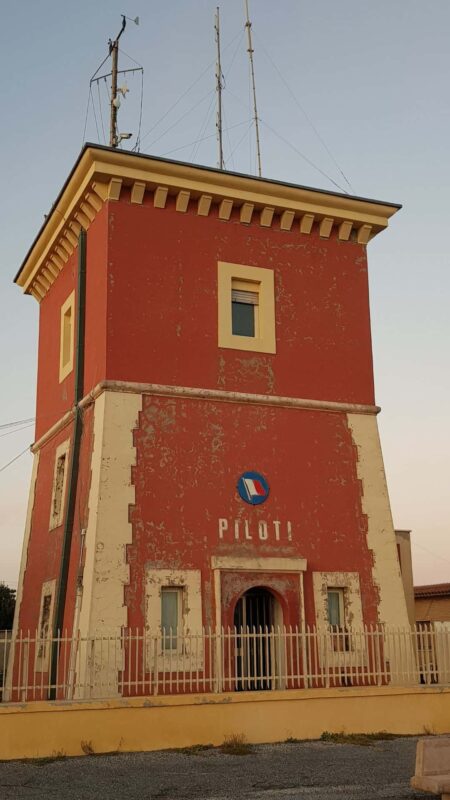
Fiumicino today: from the village to the city
Naturally, over almost two centuries, Fiumicino has expanded significantly, transforming from a small seaside village into a real city, complete with a large airport, shopping centers, and various types of infrastructure.
Despite the changes, destruction, and new constructions, the ancient charm of Borgo Valadier has remained unchanged.
If you are passing through the city, you should absolutely not miss it!



